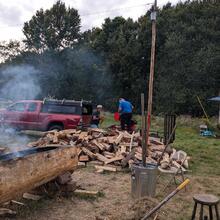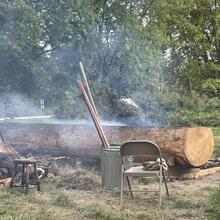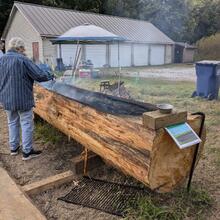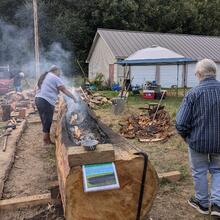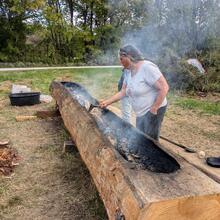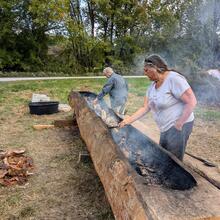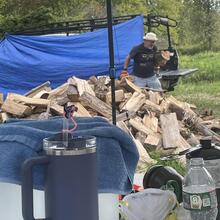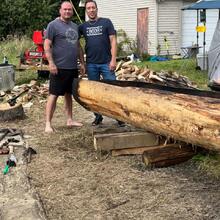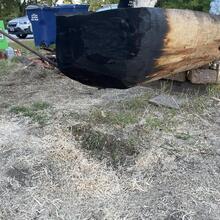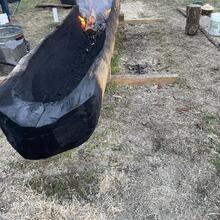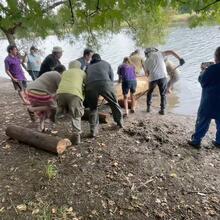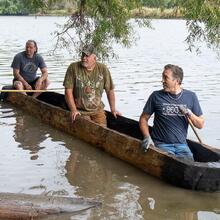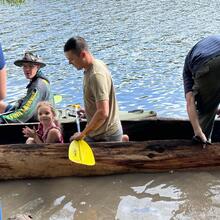
Burn Out Dug Out Canoe Photo Gallery
Thought I’d post a few pictures of the burn out canoe. It’s looking amazing and the medicine is powerful. Anyone have a chance there’s still time to see this white pine turn into a canoe, traditionally done. Wliwini to all the ones that made this happen! The canoe is just about finished its burn and dug out. Smudged her tonight to thank her for this opportunity and gift. Also, for having restrictions on the burn from the Missisquoi National Wildlife Refuge. - Chief Gagne
Today watching the burn-out dug-out canoe being moved traditionally and to see it on the Missisquoi Gliding was a gift from the Ancestor’s and all the ones who worked on her. It’s been way over 100 years since this has happened at Missisquoi. To see the next generation already getting involved is heartwarming! - Chief Gagne

The Traditional Burn-out Process
Traditionally, this process was mainly all done with fire, from cutting the tree down to the finished canoe. It could take anywhere from a week to 10 days depending on length and weather conditions. It would be burning around the clock 24/7 supervised by men working in shifts until it is complete.
To begin, you would select a pine tree nearthe water that was straight and had enough height before the first branches sprouting outwards. Once a tree was chosen, you would peel the bark off the base, and cover it with wet clay as high as you could reach. A fire would be started 3/4 of the way around the base of the tree and the burn would begin.
During this process, you are not only cutting the tree down, but also shaping one end of the canoe. The wet clay would prevent the fire from climbing all the way up the tree. The same process is used to hollow out the canoe itself. The fire is allowed to burn for a while, then coals are scraped away, and the process continues until the tree weakens and falls over. Once this happens, the final length is determined, and a fire is started at the other end. The remaining bark is peeled off, and a fire is started directly on top of the log. Once a quarter of the log is burned out, the fire is centralized and you begin to hollow out the canoe, burning and scraping.
Once the canoe's shape was finalized, it was pushed into the water and it was left there. In the fall, before moving further inland to a winter village, the canoe would be sunk to the bottom ofthe lake or river, keeping it away from the ice to prevent damage. In the end, a canoe made in this way could last up to 15-20 years.


